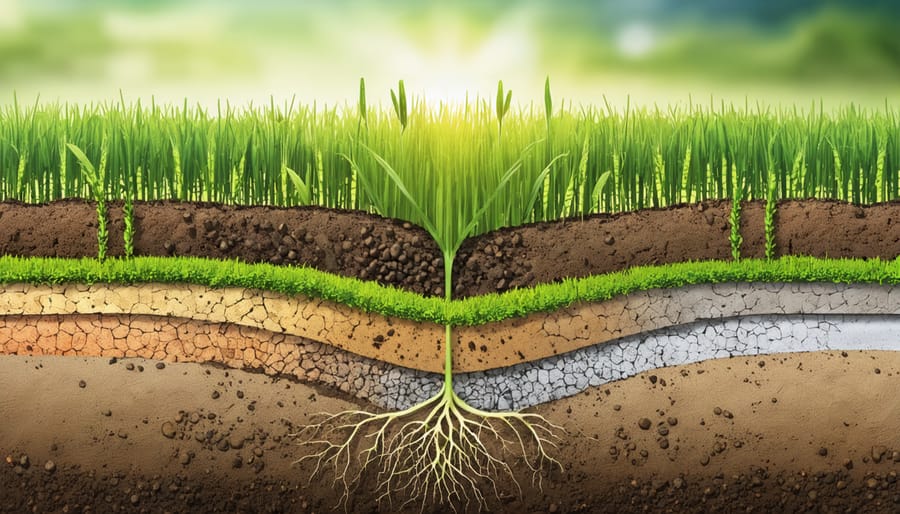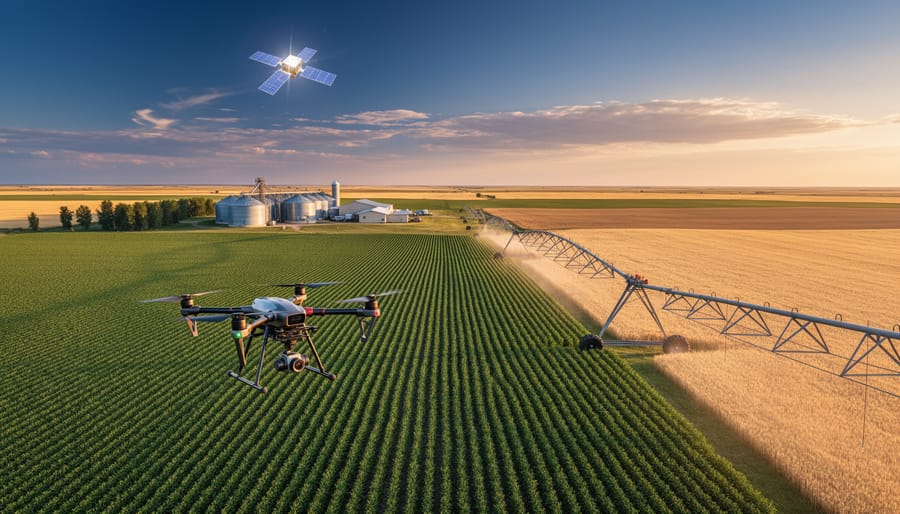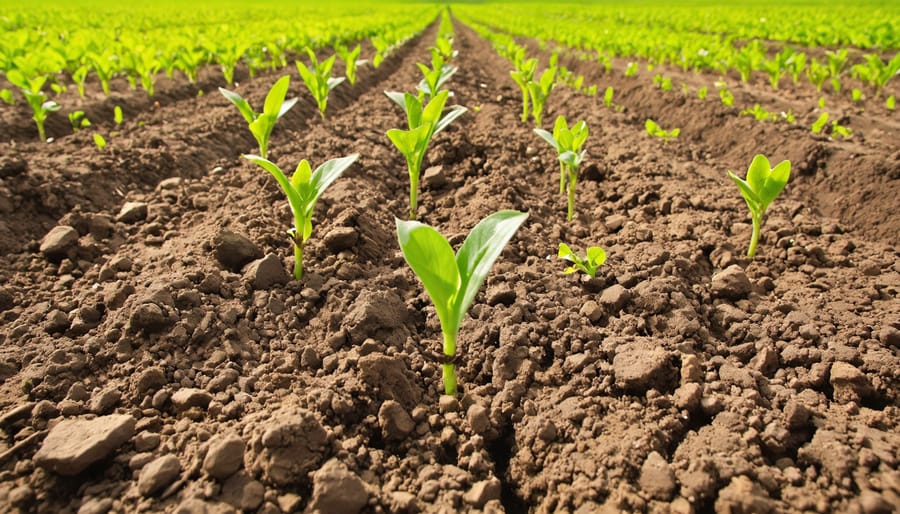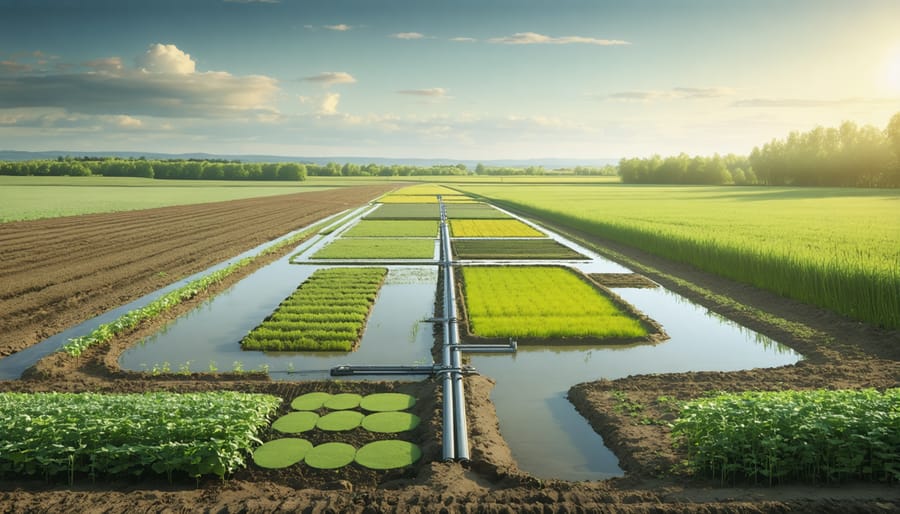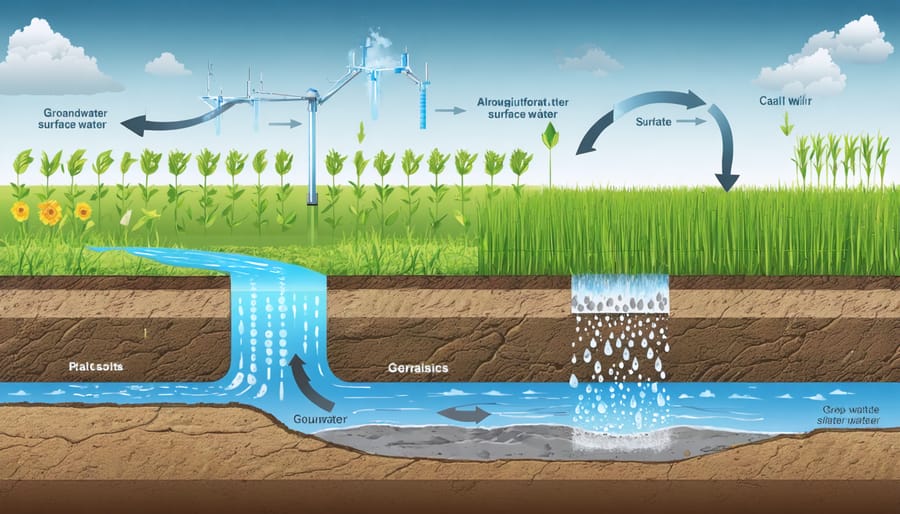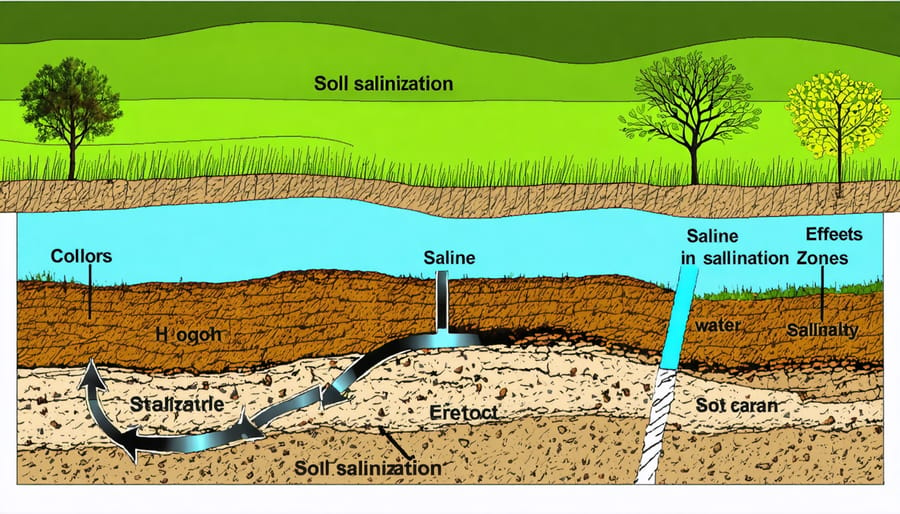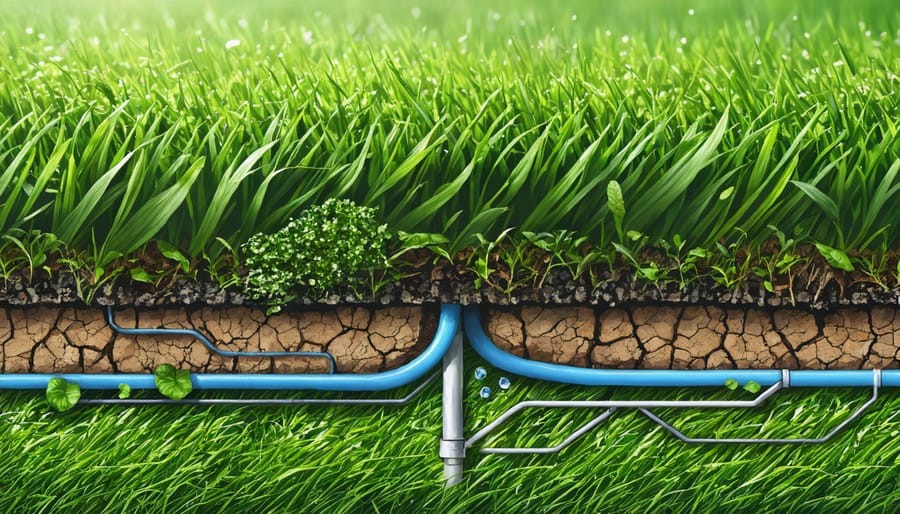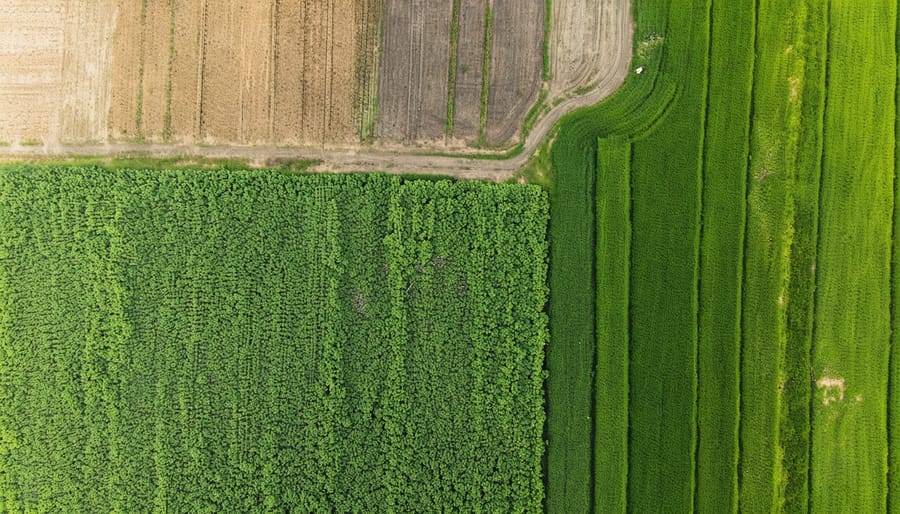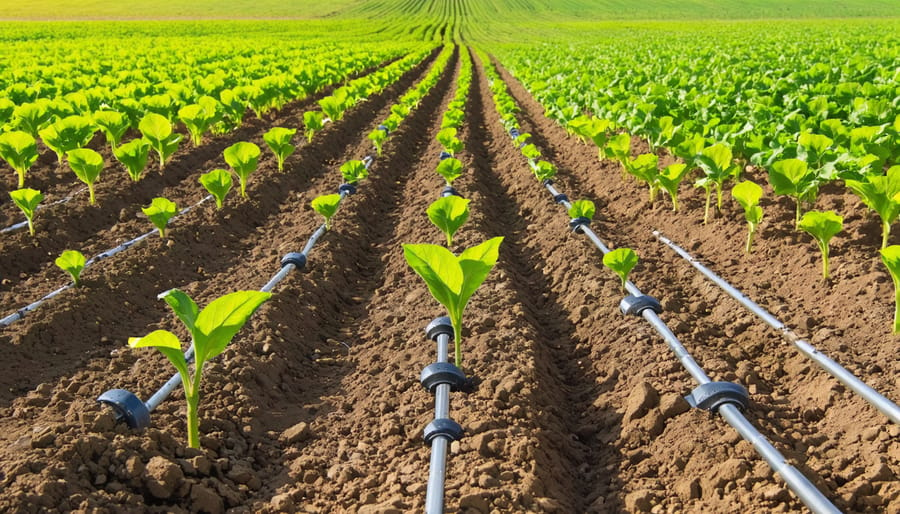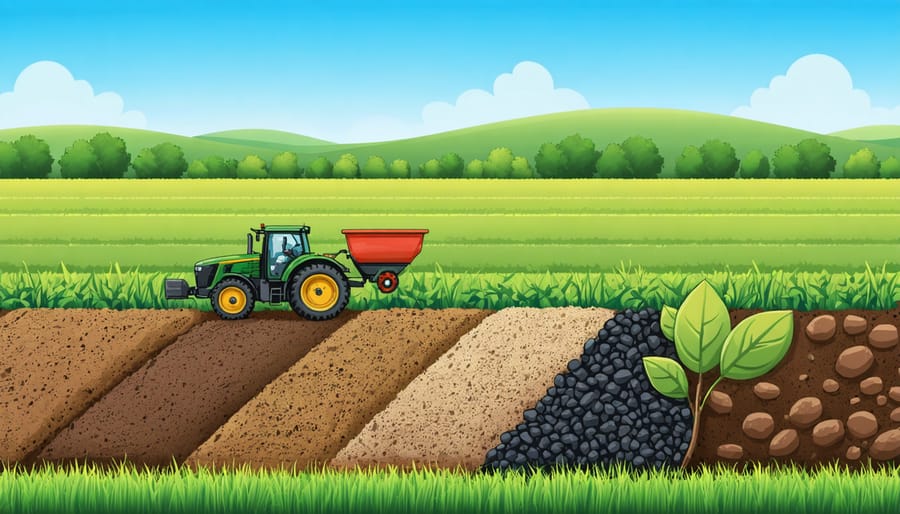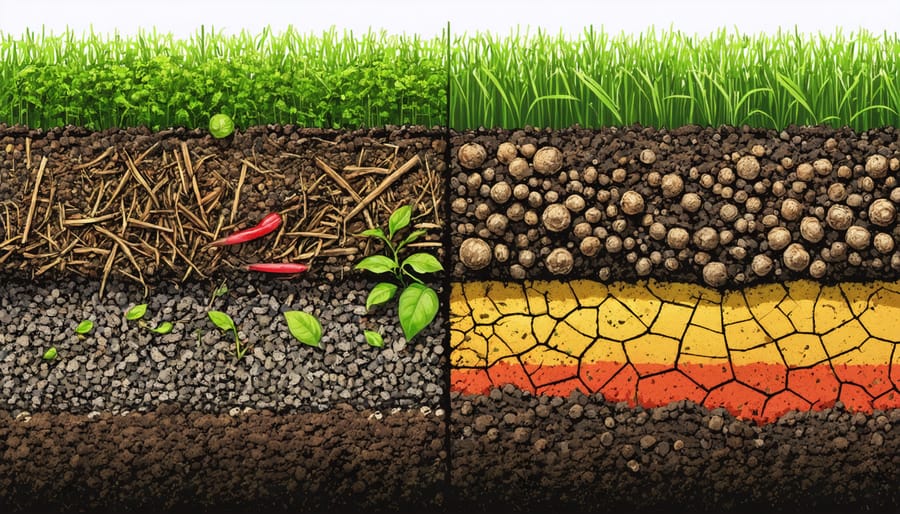Boost your soil’s water-holding capacity by incorporating organic matter like composted manure at 20-30 tonnes per hectare before spring planting. Monitor soil moisture levels using tension meters placed at 15, 30, and 60 cm depths to optimize irrigation timing and prevent water stress. Implement soil and water conservation practices through strategic cover cropping with drought-resistant species like fall rye or winter wheat, establishing root systems that create natural moisture-retention channels. Alberta’s agricultural success hinges on moisture management – every 1% increase in organic matter allows soil to hold an additional 25,000 litres of water per hectare, directly impacting crop yields and farm sustainability. Recent field trials across central Alberta demonstrate that fields utilizing moisture retention techniques require 30% less irrigation while maintaining optimal crop performance during critical growth stages.
The Science Behind Moisture-Retaining Soils
Understanding Soil Structure
The foundation of effective moisture management lies in understanding how different soil structures influence water infiltration and retention. Here in Alberta, we commonly work with various soil types, each with unique characteristics. Clay soils, while nutrient-rich, have tiny, tightly packed particles that can hold water well but may become waterlogged. Sandy soils, with their larger particles, allow water to drain quickly but struggle to retain moisture. Loam soils, considered ideal for farming, offer a balanced mix of particle sizes that support both good drainage and moisture retention.
The arrangement of these soil particles creates pore spaces, which are crucial for water storage. Think of your soil like a sponge – the more well-structured it is, with a good balance of macro and micropores, the better it can hold water while still allowing roots to breathe. Organic matter content plays a vital role here, acting as a natural binding agent that improves soil structure and creates stable aggregates, ultimately enhancing your soil’s capacity to store water for crop use.
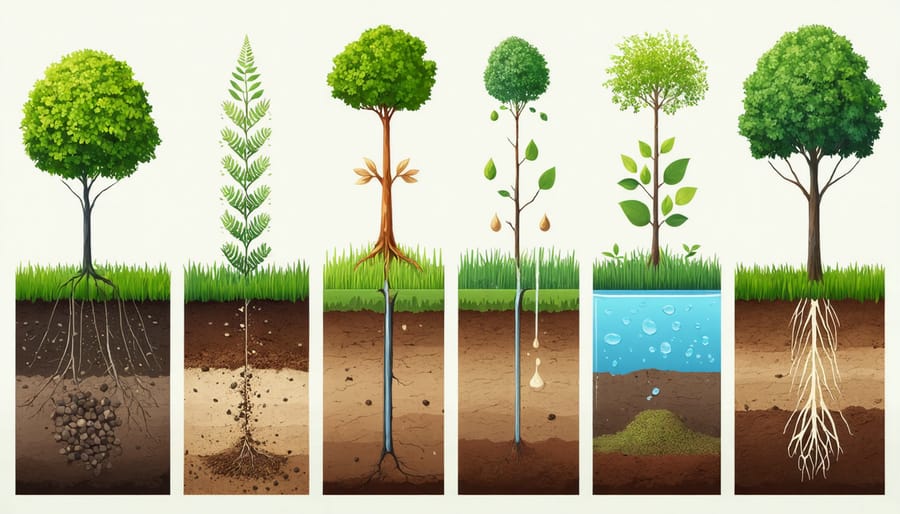
The Role of Organic Matter
Organic matter acts as your soil’s natural sponge, playing a crucial role in moisture retention across Alberta’s diverse agricultural landscape. For every 1% increase in organic matter, soil can hold an additional 20,000 litres of water per hectare. This remarkable capacity comes from organic matter’s unique structure, which creates a network of tiny pores and channels that trap and store water.
On Prairie farms, where moisture conservation is critical, organic matter helps reduce evaporation rates and maintains consistent soil moisture levels throughout the growing season. It also improves soil structure by binding soil particles together, creating stable aggregates that resist erosion and compaction while maintaining optimal air and water movement.
Local farmers who’ve implemented organic matter management strategies report significant improvements in drought resilience. For example, incorporating crop residues, using cover crops, and applying composted manure can boost organic matter levels by 0.5-1% over three to five years. This translates to better germination rates, more uniform crop development, and reduced irrigation needs – particularly valuable during our dry spells.
Proven Moisture Retention Techniques for Alberta Farms
Cover Cropping Success Stories
The Smith family farm in Lethbridge County has become a regional success story for cover cropping, demonstrating remarkable improvements in soil moisture retention over the past five years. After implementing a diverse mix of fall rye and field peas, they reported a 40% increase in soil moisture levels and reduced irrigation needs by 25% during the growing season.
Just north in Red Deer County, Sarah Johnson transformed her 800-hectare operation by introducing winter wheat and hairy vetch as cover crops. “The difference in soil moisture is like night and day,” she shares. “During the 2021 drought, our fields maintained crucial moisture levels while neighboring farms struggled.”
The Mountain View Hutterite Colony near Strathmore presents another compelling case. Their innovative approach of using cocktail cover crops, including oats, radishes, and clover, helped increase organic matter by 2% over three years. Colony manager David Wurz notes that their fields now require significantly less irrigation, saving both water and operational costs.
These success stories share common elements: careful crop selection suited to local conditions, commitment to long-term soil health, and patience during the transition period. Each farmer emphasized the importance of starting small, typically with 40-80 hectares, before expanding their cover cropping program. Their experiences prove that cover cropping isn’t just an environmental choice – it’s a practical solution for moisture management in Alberta’s challenging climate.
No-Till Practices That Work
No-till farming has proven particularly effective across Alberta’s diverse agricultural landscapes, helping farmers maintain crucial soil moisture while building resilient soil structures. By implementing regenerative agriculture practices, producers have seen significant improvements in water retention and soil health.
Key practices that work well in our climate include leaving at least 30% crop residue on fields after harvest, which acts as a natural moisture barrier and prevents evaporation. Using precision equipment for seed placement while minimizing soil disturbance has shown excellent results, particularly in areas receiving less than 450mm of annual rainfall.
Cover cropping between main crop seasons has emerged as a game-changer for many Alberta farmers. Deep-rooted species like fall rye and clover create natural water channels while adding organic matter to the soil. Local success stories include farmers in Lethbridge County who reported a 25% reduction in irrigation needs after three years of continuous no-till practices.
Equipment modifications have proven crucial for success. Many farmers have found success with narrow knife openers on their seeders, which create minimal soil disturbance while ensuring proper seed placement. For those transitioning to no-till, starting with fields that have good drainage and relatively level topography can help ensure early success and build confidence in the system.
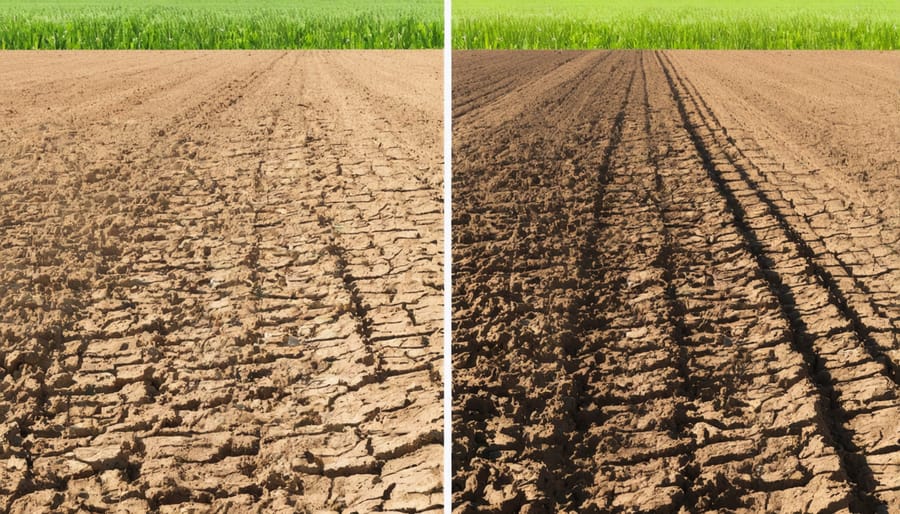
Mulching Strategies for Prairie Soils
In Alberta’s challenging prairie climate, strategic mulching plays a crucial role in maintaining soil moisture. For optimal results, apply organic mulch in layers of 5-10 cm thickness during late spring when soil temperatures have warmed sufficiently. Cereal straw remains a popular choice among local farmers, providing excellent moisture retention while gradually decomposing to enhance soil structure.
For field crops, leaving crop residue on the surface has proven particularly effective. Local studies show that standing stubble catches snow effectively, increasing spring moisture by up to 35% compared to bare fields. Many successful Alberta farmers complement this approach by incorporating cover crops like fall rye or winter wheat, which serve as living mulch during shoulder seasons.
Wood chips and bark mulch work well for smaller areas and specialized crops, but require careful nitrogen management to prevent deficiency in the soil. Consider adding a thin layer of composted manure beneath these materials to maintain nutrient balance.
For market gardens and specialty crops, biodegradable plastic mulch offers excellent moisture retention while breaking down naturally over time. However, traditional organic mulches typically prove more cost-effective for large-scale operations.
Remember to adjust mulching depth based on soil type – lighter applications for heavy clay soils and thicker layers for sandy soils. Monitor moisture levels regularly using simple soil probe tests to optimize your mulching strategy throughout the growing season.
Measuring and Monitoring Soil Moisture
Simple Field Tests
Testing your soil’s moisture retention doesn’t always require fancy equipment. Here in Alberta, farmers have developed reliable field tests that you can perform right on your land. The simplest method is the squeeze test: grab a handful of soil and squeeze it firmly. If it holds its shape when you open your hand and crumbles when poked, you’ve got good moisture content. If it falls apart immediately, it’s too dry.
Another practical test is the ribbon test, particularly useful for our prairie soils. Roll a small amount of soil into a ball, then try to form it into a ribbon between your thumb and forefinger. The longer the ribbon you can make, the higher the moisture retention capacity. Most Alberta clay-loam soils should form a ribbon 2-5 cm long.
For a quick field assessment, dig a small hole about 30 cm deep and observe the soil profile. Dark, consistently moist soil throughout indicates good retention, while dry, lighter patches suggest poor water-holding capacity. These simple tests, while not as precise as laboratory analysis, provide valuable immediate feedback for day-to-day farm management decisions.
Technology-Based Solutions
Modern moisture monitoring technology has revolutionized how Alberta farmers track and manage soil moisture levels. Soil moisture sensors, available through many local agricultural suppliers, provide real-time data that can be accessed through smartphone apps or desktop computers. These tools typically measure moisture at various depths, helping farmers make informed decisions about irrigation timing and volume.
Time Domain Reflectometry (TDR) probes have become increasingly popular among Prairie farmers, offering accurate readings within minutes. These portable devices can be particularly useful during critical growth stages when precise moisture management is essential. For larger operations, automated weather stations equipped with soil moisture sensors can create detailed moisture maps of entire fields.
Many Alberta producers are now implementing drone technology with thermal imaging capabilities to identify moisture stress patterns across their fields. This aerial perspective, combined with ground-level sensors, provides a comprehensive understanding of soil moisture distribution.
The Alberta Agriculture and Forestry department offers workshops on implementing these technologies, and several equipment sharing programs exist through local farming cooperatives, making these tools more accessible to smaller operations. Remember, while technology is helpful, it works best when combined with traditional knowledge and regular soil observation.
Cost-Benefit Analysis
Initial Investment Considerations
Implementing moisture retention soil practices requires careful consideration of upfront costs and long-term benefits. For Alberta farmers, initial investments typically range from $150 to $300 per hectare, depending on the chosen methods and existing soil conditions.
The primary cost factors include soil amendments, such as organic matter and specialized minerals, which average $75-125 per hectare. Equipment modifications or rentals for proper application might require $50-100 per hectare. Soil testing and analysis services, essential for baseline measurements, generally cost $200-400 for comprehensive reports.
For a typical 400-hectare farm, the total implementation cost often falls between $60,000 and $120,000. However, many farmers opt for gradual implementation, treating 25% of their land annually to spread costs over multiple seasons. Provincial agricultural grants and sustainability incentives can offset 30-50% of these expenses.
According to Alberta Agriculture Services, moisture retention improvements typically show returns within 2-3 growing seasons through reduced irrigation costs and improved crop yields. Local farmer Richard Schmidt from Lethbridge reports recovering his $75,000 investment within two years through 30% reduced water usage and 20% increased crop yields.
Remember that costs vary significantly based on soil type, current conditions, and chosen methods. Working with local agricultural extension offices can help develop a cost-effective implementation plan tailored to your farm’s specific needs and budget constraints.
Long-Term Returns
Investing in moisture retention soil improvements shows compelling returns over extended periods. Based on data from the Alberta Agriculture Research Institute, farmers who implemented comprehensive water-saving strategies saw an average 15-20% reduction in irrigation costs within the first three years.
The financial benefits compound over time. A five-year study of farms in Southern Alberta revealed that properties with enhanced soil moisture retention experienced up to 30% higher crop yields during drought periods compared to conventional fields. This translates to approximately $200-300 per hectare in additional revenue during challenging growing seasons.
Beyond direct crop yields, improved moisture retention reduces operational costs. Farmers report spending 25% less on emergency irrigation equipment and experiencing fewer crop losses during dry spells. The initial investment in soil amendments and organic matter typically pays for itself within 2-3 growing seasons.
Long-term soil health benefits also contribute to property value. Real estate assessments show that farms with documented soil improvement programs command 10-15% higher market values. Additionally, these properties often qualify for environmental stewardship grants and carbon credit programs, providing supplementary income streams.
For a typical 400-hectare farm, the cumulative financial benefit over a decade can exceed $500,000 when accounting for reduced input costs, improved yields, and additional revenue opportunities.
As we’ve explored throughout this article, improving soil moisture retention is crucial for successful farming in Alberta’s diverse climate conditions. The combination of proper soil structure management, organic matter incorporation, and targeted conservation practices can significantly enhance your land’s water-holding capacity and overall productivity.
Remember that implementing moisture retention strategies is not a one-size-fits-all approach. Start by assessing your current soil conditions and selecting techniques that align with your specific farming operation. Whether you choose to begin with cover cropping, reduced tillage, or organic matter amendments, taking that first step towards better soil health is what matters most.
The success stories we’ve shared from fellow Alberta farmers demonstrate that these methods work in our unique agricultural landscape. Consider joining local farming networks or reaching out to agricultural extension services for additional support and guidance. Many of your neighbours have already experienced the benefits of improved moisture retention: better crop yields, reduced irrigation costs, and enhanced resilience during dry periods.
Take action this growing season by implementing at least one new moisture retention practice. Monitor your results, adjust as needed, and gradually expand your soil management approach. Remember, healthy soils are the foundation of sustainable agriculture, and every improvement you make contributes to the long-term success of your farm and our Canadian agricultural community.
Together, we can build more resilient farming operations while preserving our precious water resources for future generations.

